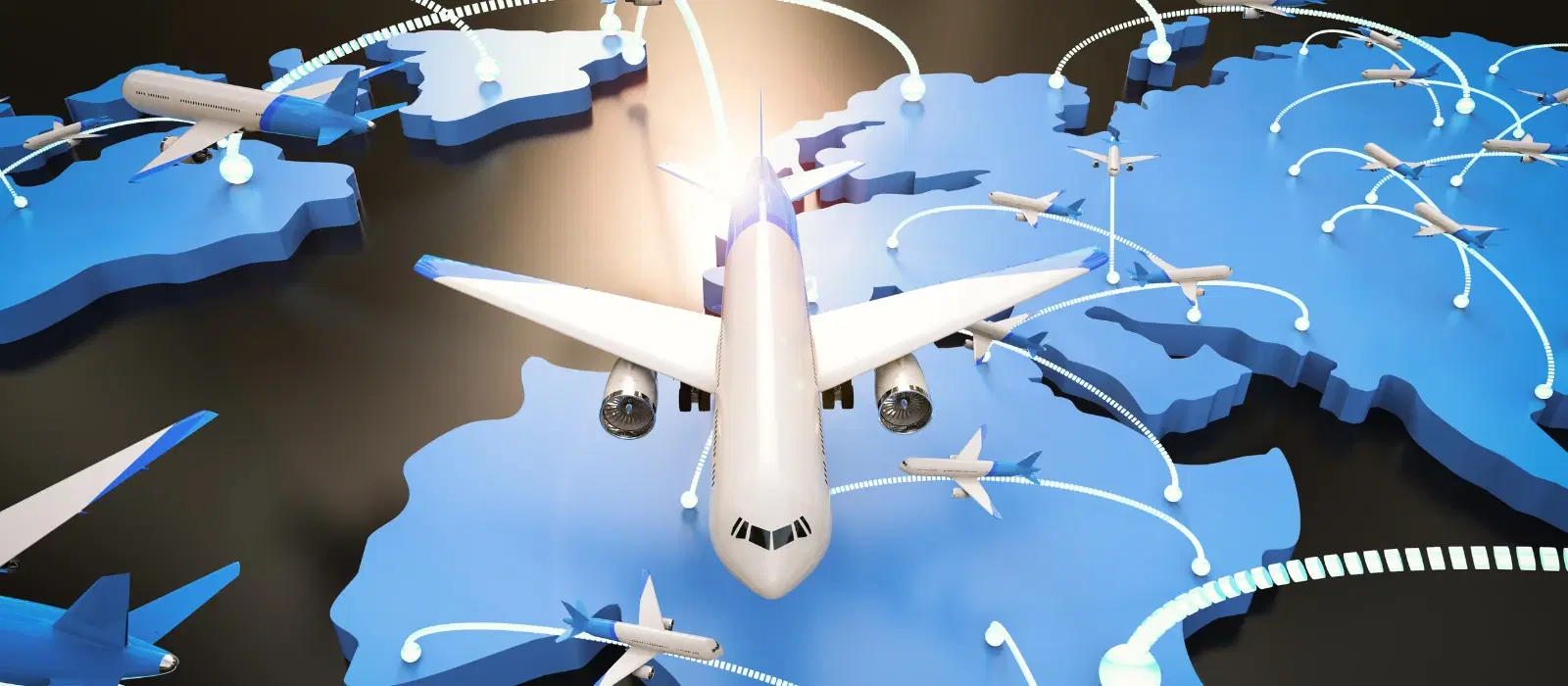
Flights
•05 min read
-95e61ea7-ab4c-459c-9b20-5d183cfc507b.png&w=3840&q=75)
Travel is an ever-evolving journey, and with more travelers taking to the skies each year, understanding how many international airports in the world has become both fascinating and essential. With international air travel connecting continents and cultures, this guide reveals key insights into the number of international airports globally, their defining features, and the impact of major global air travel hubs. Europe and the Americas, hosts many of the world's bustling airports. Africa and Oceania, while smaller in numbers, are steadily enhancing their international networks to support growing travel demands. Incorporating terms like 'list of global international airports' and 'international airport statistics' helps capture a broader range of search queries.
Did You Know?
The United States leads the world with over 300 international airports, making it the country with the highest number of global air travel hubs, based on aviation studies.
The global network of international airports plays a pivotal role not merely in facilitating travel but also in boosting economies through trade and tourism. Major hubs serve as conduits for cultural exchange and are instrumental in shaping the future of global travel.
A few airports stand out because of their sheer scale and passenger traffic. From the sprawling terminals designed to welcome millions, to state-of-the-art facilities that provide comfort and efficiency, these airports are key players on the world stage. These mega hubs have the capacity to host both domestic and international flights, ensuring that travelers experience seamless transitions as they journey from one destination to another.
Across different regions, there are airports that are revered for their efficiency and capacity. For instance, some of the busiest airports in Europe, Asia, and the Middle East are celebrated for offering a balance of luxury and accessibility. In each region, these bustling centers of travel not only manage high passenger volumes but also showcase the cultural and modernistic flair of their locales.
Major international airports are the lifelines of the global air travel network. They serve as gathering points for international flights, contributing significantly to global tourism, international business, and cultural exchange. With enhanced infrastructure, travelers can enjoy features like personalized check-in services, premium lounges, and meticulously managed flight operations. When booking flights with trusted carriers like Air India and Air India Express, customers can experience the blend of affordable luxury and reliability, ensuring that every journey is as memorable as it is smooth. And with add-ons like FlyCan* T&C apply and FlyNxt* T&C apply, you are protected against unexpected plan changes.

Keeping an eye on the total international airports worldwide requires a combination of data analytics and reliable resources. With continued advancements in technology and data integration, tracking the developments in the global airport network has never been more accessible.
If you’re passionate about aviation or planning a global journey, several tools can help track international airports. Comprehensive databases like those provided by leading aviation organizations, specialized airport code lists, and government aviation reports make it easier to stay updated. Each of these tools simplifies the process of understanding how many airports handle international flights, giving travelers and industry professionals deep insights into airport performance worldwide.
It is important to acknowledge that counting international airports can be challenging. Variations in the definitions of what qualifies as an international airport, frequent updates in classifications, and changes in operational statuses can all contribute to discrepancies. Nonetheless, the available data provides a clear snapshot of the current state of global air travel hubs.
Beyond the numbers, international airport statistics tell a story of dynamic growth and evolving travel trends. Over the past decade, we have seen an impressive rise in the development of international airports in emerging markets. This growth has been fueled by significant investments in aviation infrastructure, modern technology, and a surge in global connectivity.
As more destinations in India, China, and other emerging economies prioritize premium travel experiences, the global airport network is set to expand tremendously. New international airports are being built, and existing ones are being upgraded, ensuring that the world’s air travel hubs meet the evolving needs of both leisure and business travelers. Tata Neu’s seamless booking experience further simplifies the world of travel, offering customers an integrated platform where they can book premium flights, enjoy personalized loyalty benefits, and earn NeuCoins on all bookings (1 NeuCoin = 1₹ saving), ensuring every journey is more rewarding.
Looking ahead, experts anticipate a steady increase in the global count of international airports. This growth will likely be driven by sustained increases in global air travel demand, advancements in aviation technologies, and the constant need to improve international connectivity. As travel becomes more integrated and luxurious, international flight hubs will continue to evolve, offering travelers enriched experiences backed by a commitment to reliability and premium service.

There are approximately 1,200 international airports worldwide, although this number can vary depending on classification criteria.
The United States has over 300 international airports, making it a leader in global air travel hubs.
The United States is home to more than 300 international airports spread across various states.
Hartsfield-Jackson Atlanta International Airport is widely recognized as the busiest airport in the world based on passenger traffic data from recent aviation studies.
The journey through the world of international airports reveals not only remarkable statistics but also the dynamic roles these hubs play in connecting people and cultures. From understanding the fundamental traits of an international airport to exploring the major hubs that define global connectivity, this guide has highlighted the importance of staying informed in an increasingly interconnected world. With aviation evolving at the pace of modern life, keeping up-to-date with international airport statistics provides invaluable insights for travelers, professionals, and global citizens alike.
Whether you are planning a business trip, a family vacation, or a wanderlust-fueled adventure, the seamless experience offered by Tata Neu’s platform ensures that every part of your journey—from booking with reliable flight partners like Air India and Air India Express to earning NeuCoins on all transactions (1 NeuCoin = 1₹ saving)—is designed to bring joy, comfort, and a touch of luxury. Enjoy the journey as each flight marks another step in your remarkable travel story.